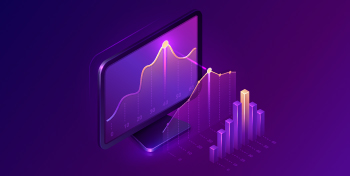The areas of digital technologies, cryptocurrencies and blockchain received a boost of rapid development in early January 2020. The results were staggering. Let’s look at the key forecasts for these technologies in 2021.
Technological progress and its mass implementation
The new year has prepared a lot of new things for us. Based on the experience of previous years, I would like it to be only good, and therefore let’s look at the main points of forecasting the development of innovations in the current year.
- Capital markets accelerate the transition from analog to digital
Some very interesting developments in the storage and exchange of digital assets are expected after the activity of 2020.
Regulated crypto exchanges and custodians will continue to operate, and new ones will appear. Recent initiatives announced and expected to be implemented during 2021 include DBS Digital Exchange, launched by DBS Bank in Singapore, and Zodia, a collaboration between Northern Trust and Standard Chartered to launch an institutional-level cryptocurrency storage solution in the UK.
Traditional exchanges will seek digital transformation and seek both technological and knowledge-enhancing partnerships, recognizing the strong interest in trading crypto assets from both retail and institutional investors.
Traditional custodians, reacting to the fact that their competitors are launching digital services, as well as seeking to meet customer demand and market opportunities, will seek to develop cryptocurrency custodian offerings that will begin to reflect the traditional types of stored products that the market is used to. The key will be how they avoid repeating the old disparate patterns in order to truly embrace the digital revolution.
Digital Prime’s brokerage offerings will begin to become more tangible with the emergence of both existing major brokers and new players in this space. Some of these new players will also be invested in or form joint ventures with more established existing players.
It is expected that the regulation will be the center of attention, to make this as a key in some jurisdictions, and in the development of standards in different jurisdictions.
- Productive innovations from the point of view of tokenized assets are beginning to bring success

Although there has been a lot of hype around security tokens, they are still only in their infancy and will begin to manifest themselves during 2021 as more advanced products are developed in a regulated environment.
The challenge that needs to be addressed is to select companies with a broader pool of funding, whether investing in them in cryptocurrency or fiat currency, and to ensure that products placed through an initial offering or public offering have potential demand in the secondary market.
As such key opportunities will emerge for well-designed leveraged products, given that many investors have large cash holdings and crave returns, as well as for structured portfolio-based products that provide diversity for investors.
Real estate security Tokens (REST) and areas such as asset-backed securities as well as digital finance are all areas worth keeping an eye on in 2021, as well as digital stocks created from an underlying portfolio of assets, such as multiple financial technology investments held in funds.
The ESG / Green initiatives will also see key changes, as well as other areas where assets have been stationary to date but have underlying cash flows that guarantee securitization, such as numerous trade finance options.
Given that traditional investors are still finding their interests in the digital space, digital products that can be packaged in a traditional shell to create a hybrid product, allowing them to adapt it to existing processes, will also become more popular.
- Demand for smart and digital hubs is growing
Just as the world is experiencing the fourth Industrial Revolution (sometimes referred to as 4IR), exchanges are entering a new phase. The 4IR concept is the driving force behind the Internet of Things (IOT), where artificial intelligence, automation, and web technologies combine to create “smart” versions of everything from cars to refrigerators.
A similar idea is spreading in the world of exchange trading, as data-driven smart contracts, tokenization, and DLT make it possible to facilitate true asset portability while linking remote liquidity centers. This will help form much more powerful ecosystems.
Thus, digital solution-based models that can connect many participants from upstream to downstream, as well as to other services, will be the ones that will start to see a real need as they bridge the gap between the existing traditional infrastructure and the fragmented digital infrastructure with support for multiple blockchains. This will ensure that the technological fragments can be linked together.
The convergence of data, analytics, and artificial intelligence with blockchain will lead to smarter solutions in 2021, confirming the predictions contained in a report published by the World Economic Forum entitled “Bridging the Governance Gap: Interoperability for Blockchain and Legacy Systems”, which states:
“Oracle’s decentralized services can become an abstraction layer for legacy and DLT systems to interact with and discover hidden values, combining the utility of both worlds.”
Centralized finance and decentralized finance (DeFi) have so far been largely in parallel disparate structures, but this will begin to change in 2021 as use cases emerge that provide greater overlap between them and, as a result, greater opportunities.
Managing tokens and the possibility of easier collateral (shares), borrowing, and lending of digital assets are two aspects that we will continue to hear more about in 2021.
- B2C and B2B Convergence with the Intersection of Crypto Exchanges and Payments

The ability of emerging markets to use users, aggregate them, and match them with institutional activities, including a well-designed compliance design to ensure proper KYC / AML, will be a key event in 2021.
In the second half of 2020, PayPal announced that it was launching a crypto offering for its users in partnership with Paxos. This is combined with the activities that Paxos has already conducted in the B2B field.
During 2020, major investments were made in payment systems in Africa, such as Goldman Sachs and Bezos Ventures.
Innovative payments using stablecoins, which reduce the friction when transferring fiat money, will attract large users. The ability of this form of digital payment to interact with cryptocurrency exchanges to enable efficient, dynamic asset exchange will open up a broader degree of financial access and users for the companies that use it, with positive benefits for retailers, merchants, payment operators, exchanges, and institutions. These will be key drivers of growth in emerging markets.
- Artificial intelligence and machine learning will change banking and finance
Artificial intelligence and machine learning remain the most relevant topic in the financial world in the last few years. By making intelligent decisions, companies gain a huge competitive advantage to cope with the changing industry situation. AI provides a deeper understanding of customer needs and expands the capabilities of business processes. Companies can optimize and quickly refine their market offerings for a rapidly changing world.
In almost all industries, there is a high demand for AI and ML, and it is not going to decrease. Currently, the global market value of artificial intelligence technologies exceeds 30 billion US dollars. The global artificial intelligence market is projected to grow rapidly in the coming years, reaching $ 126 billion by 2025.
In fintech alone, AI usage in 2019 reached an estimated value of $ 6.67 billion and is expected to grow by more than $ 22.6 billion in just five years. The financial technology market also expects an average annual growth rate of 23.37% through 2025, and there are many factors even accelerating growth.
- Growth in CBDC Use Cases and payments

In 2020, the digital payments industry saw increased investment activity, and there were numerous announcements of Central Bank digital Currency (CBDC) – based accounts. While some emerging markets have announced that they have either launched or are launching CBDCs, many do not realize that creating such assets is actually a fairly easy part of the entire global process.
What is more important is how it is connected to the broader ecosystem to ensure the circulation of money and cash flows. Without it, it’s a cart without a horse. It seems that countries like China have made good progress in understanding this design, and other major countries will not stand by, and so there will be some interesting developments here, and numerous pilot developments will begin in 2021.
We will also see some emerging markets begin to implement a proper CBDC and payments ecosystem by starting pilot trials. As part of this design, major players will also begin to develop their own strategies with digital loyalty tokens and utility tokens, leading to a resurgence of a design that was exaggerated a few years ago, but now has tangible commercial initiatives justifying its use and growth. Based on the above, 2021 will be full of the introduction of innovative solutions in our lives.


